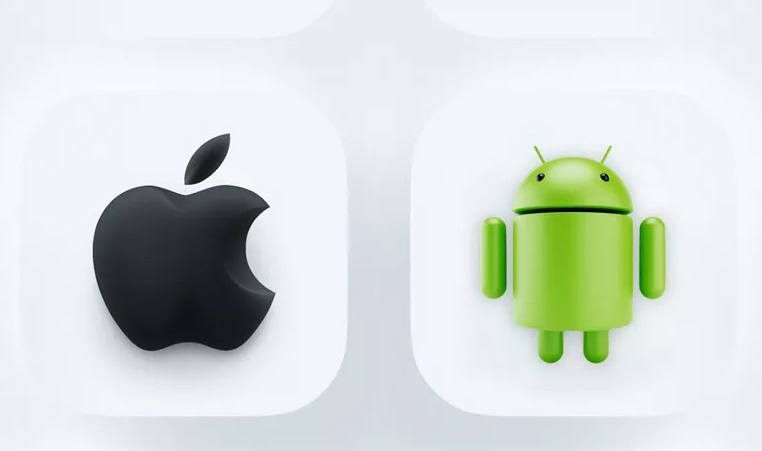Compare Android with iOS; Which One Is More Suitable for You?
When Buying A Smartphone, We Are Faced With Two General Categories; Android And iPhone Phones if You Are Planning To Buy A Smartphone But Do Not Know Which One Is More Suitable For You.
Android with iOS, We start with a question. Why did we use the plural adjective for Android phone but singular for iPhone? If you go to the market to buy a smartphone, you will be asked if you want an Android phone or an iPhone. But if you are unaware of the world of smartphones, you are probably wondering what the differences between the two are? The market is full of different phones from different brands with countless variety, so why all of them can be summed up in these two words?
The answer to this question depends on the expression of a concept called “operating system,” without which it is impossible to compare the two directly. On the other hand, a full explanation of this concept is not included in this article, so we will give a brief definition of it so that the difference between Android and iPhone phones can be more understandable.
What is an operating system?
The operating system is briefly referred to as software implemented by the manufacturer on any smart device to use it. An intelligent device without an operating system is useless and can do nothing. The operating system’s task is to connect with the internal components of the device (hardware) to create a virtual environment that the user can work with and perform tasks that today make things impossible without having these intelligent devices.
We find that this dichotomy is over the operating system by expressing this concept. Still, the next question that arises is why the letters used to separate the two categories are not related to each other? ” iPhone ” is a brand of the phone made by Apple.
While ” Android ” is not the name of the phone, it is the name of the operating system implemented on a wide range of phones with different brands. While the iPhone’s operating system is iOS, it is not common to use the iOS name to select the type of phone. To answer this question, we need to look at a brief history of each.
iOS
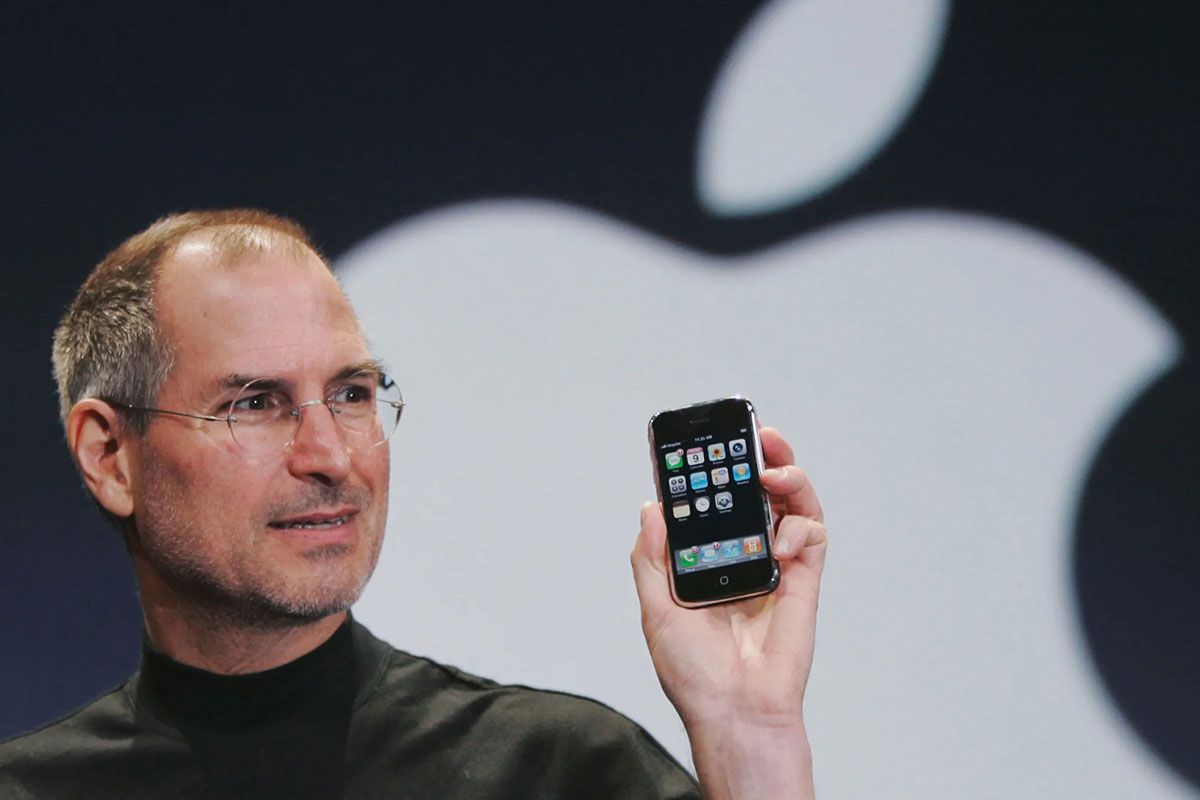
In 2007, Steve Jobs, the founder and former CEO of Apple, introduced the first iPhone with the iPhone OS 1 operating system. The active system name retains for three years until it was renamed iOS with iOS 4 in June 2010.
IOS is reserved for iPhones, which are the exclusive property of Apple; This means that this operating system can only run on iPhones.
Android

Andy Robin first introduced the Android operating system in 2003. In 2005, Google bought Android and began offering the Android operating system to smartphone makers. HTC introduced the first Android phone called HTC Dream with Android 1.0 in 2008.
Google has owned AAndroid since 2005. Android is an open-source operating system now developed by Google and licensed by various companies. Any manufacturer can use this operating system in their innovative products and even change its code according to their needs and preferences.
So with this comparison, the reason why all Android phones are placed in front of the iPhone will reveal to us. iPhones only work with Apple’s unique operating system, iOS.
Just as no other operating system like Android runs on the iPhone, the iOS operating system does not appear on any phone other than the iPhone.
On the other hand, Android is an operating system that different companies can implement on their products. Users can benefit from the Android operating system by purchasing phones from Samsung, Xiaomi, Huawei, etc. Therefore, Android is not limited to a specific phone or brand.
With this explanation, the name that should choose for this article was a comparison of Android and iOS operating systems, but since the user may have heard less of the name iOS and initially did not know the main difference between Android and iPhone phones, their operating system, this title We have chosen for the article.
This article compares the Android and iOS operating systems in terms of functionality. Otherwise, if someone is aware of the differences between the two, instead of comparing the operating systems, he considers different brands as the basis for his comparison to buying a phone.
What are the differences between Android and iOS?
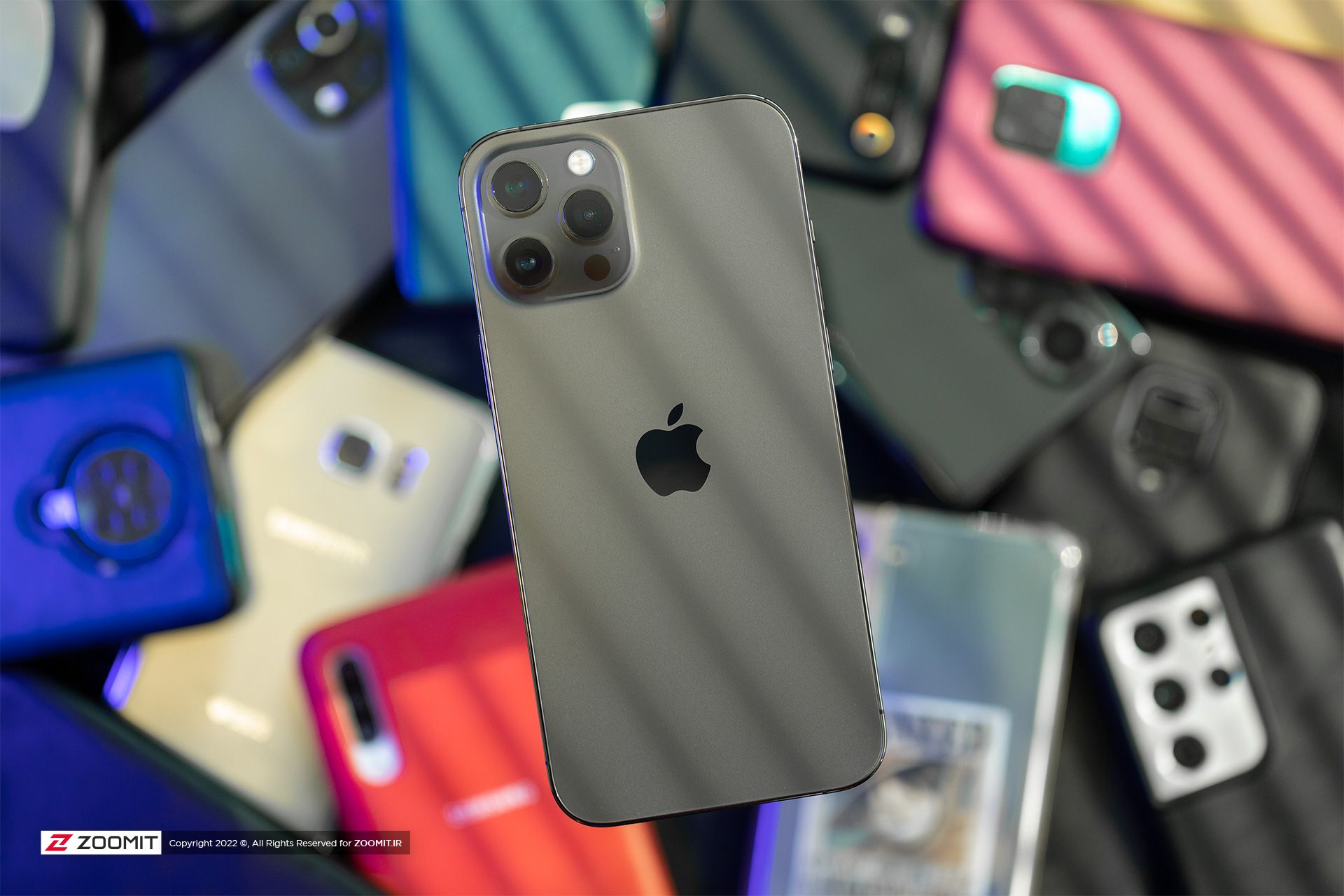
One of the most questionable issues is the differences between Android and iOS and superior when buying a phone. Each has its absolute superiority over the other, despite their differences. This question is one of those questions for which each person has a different answer, and each user chooses one for personal reasons and recommends it to others.
In general, Android and iOS have made a lot of progress in the last few years, and it is not like in the past to say that iOS or Android has shortcomings in certain areas. However, each in its way meets the needs of users. It depends on the user what he sees as his preferences and conditions of a phone. In everyday use, both meet the basic needs of users, but if we go beyond the level of general service, some parameters become more important.
For some people, for example, a quality user experience is a priority, while another person may be looking for the convenience of doing their job as much as possible, or in other words, looking for a solution that meets their needs as quickly as possible and is less troublesome. Note that speeding the phone by doing things as soon as possible is a separate issue.
Is the phone fast or fast? It is a problem.
Therefore, in the following article, we will not compare the two operating systems directly with each other but rather examine the differences between them from the perspective of what Google and Apple, as the developers of these two operating systems, have pursued their target users. And the structure, method, and solutions of each of them in meeting the user’s needs are different.
It isn’t easy to choose between the two if you do not respond to them. The mind of a regular user who has no idea about the differences between iOS and Android may be full of questions and contradictions that need to be answered.
Assuming that our primary concern for choosing a phone recognizes the differences between iOS and Android, we must select the right option according to our needs and priorities.
In this article, we have tried to express the difference between Android and iOS operating systems in simple language, assuming that the user has no idea about the difference between iOS and Android other than their names before buying the phone.
User experience
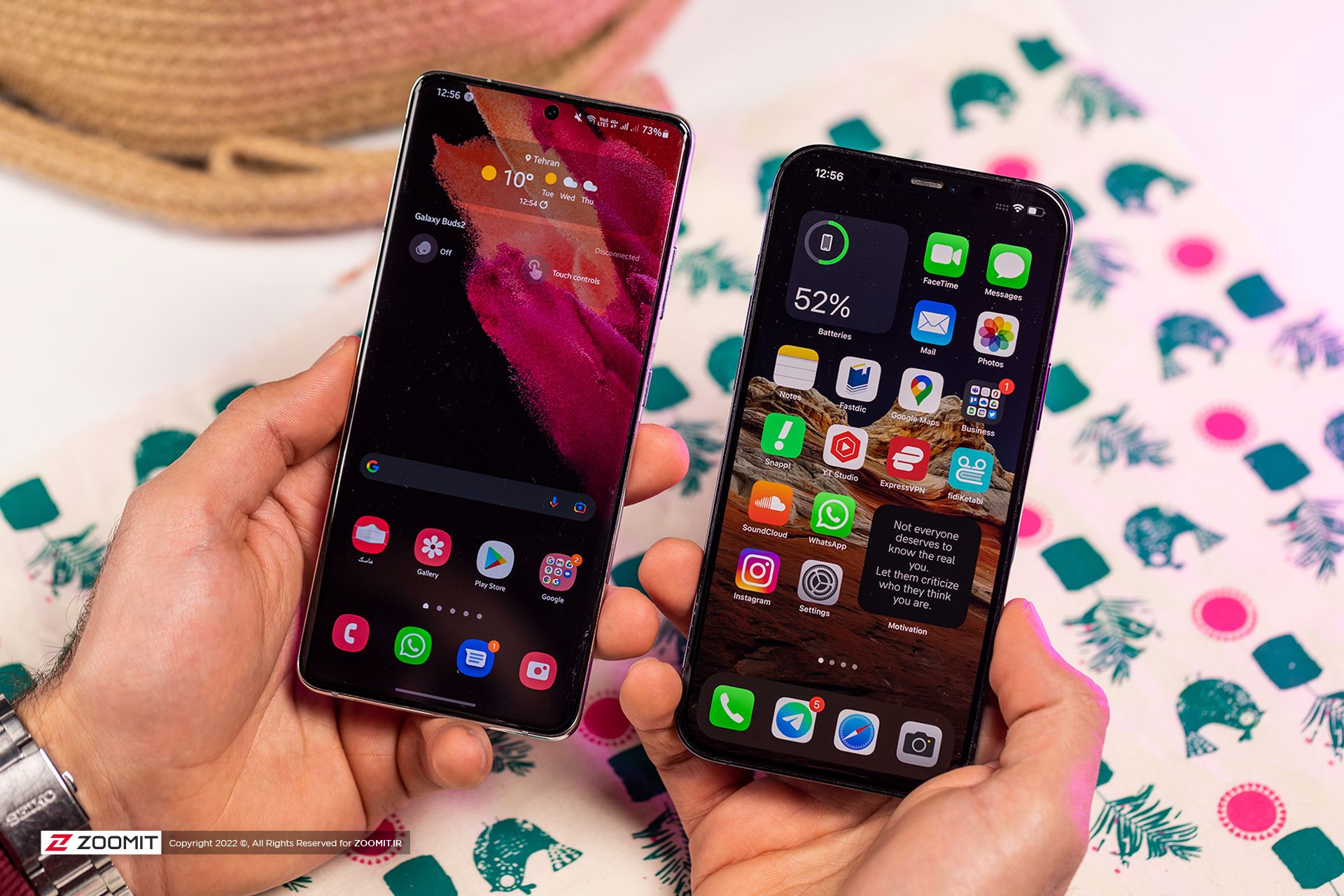
The work that smartphones do is done under complex computational processes and commands hidden from our eyes. The graphical user interface (GUI) converts touch inputs into code, and computational operations occur. Here a concept called user interface is formed, and each builder has a graphic team that works on the development of this interface.
It can say that the most important thing that connects the user to his device in a smartphone is the user interface, and it is the art of every maker to design his user interface in such a way that the user can get the most communication with it. In a nutshell, the user interface is the language of the phone talking to the user, the clever design of which creates a satisfying user experience.
iPhones introduced a smooth and straightforward user interface from the beginning, and over time they retained this feature. With iOS 7 in 2013, the operating system saw the most significant graphical changes to align itself with the modern design.
Since then, the interface has not changed graphically; instead, each version has minor visual improvements that the user sees. It may not be noticeable, but it may be an advantage because revolutionary UI changes will tarnish the user experience.
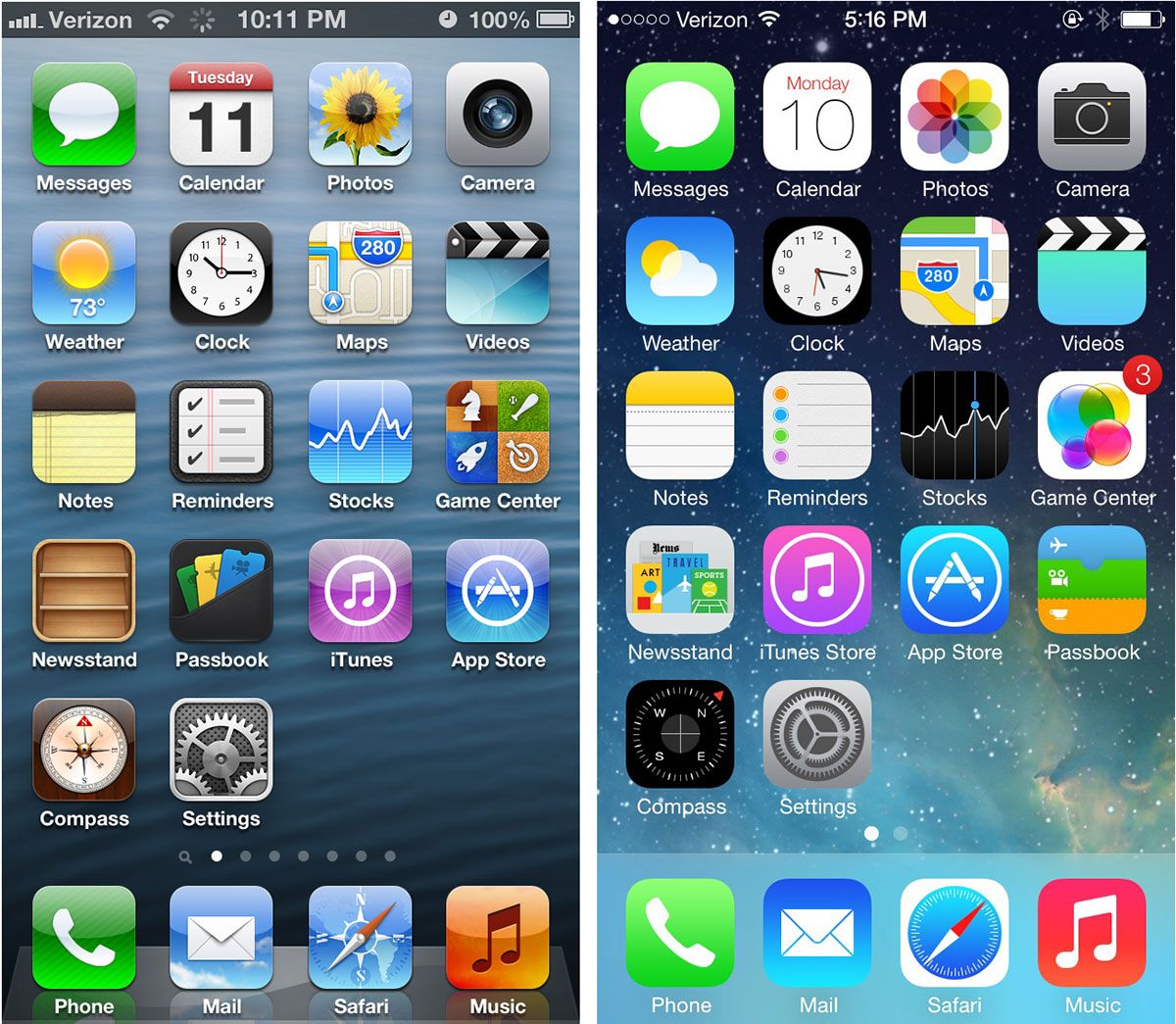
For more than a decade, many changes have taken place in the user interface of Android phones. It is a little different for Android. First of all, various manufacturers such as Samsung and Xiaomi have different graphical skins. And the avoidance of extra features is gone. Still, finally, by adding and reducing multiple parts and many tests.
Most ordinary users do not welcome the instability and the many changes in the user interface that confuse them.
In addition, the smoothness and quick response of the user interface are among the factors that affect the user experience. Then in this regard, iOS has gained more of its reputation from the past due to its psychological and stable performance, and this issue has been maintained until today.
Fortunately, in the case of Android, due to the significant improvements that Google has made to the Android kernel, it has almost eliminated the problem of instability, even in the case of low-end phones. However, in the long run, Android performance is still considered the Achilles heel of the operating system.

Despite all this talk, some manufacturers such as Samsung to optimize and simplify the user interface have paid off over the years. Now Samsung can be considered one of the manufacturers that provide an almost flawless user experience.
But suppose we want to look at it realistically. In that case, iOS is an operating system that has focused on simplicity and cleanliness from the beginning and excels in terms of the quality of the user experience.
Many manufacturers, including Google and Samsung, have modeled their efforts on improving the quality and user experience of iOS to create a quality user experience by enhancing the visual and functional features.
However, this is not the whole story, and many critical points may be vital for some users. Here are the most important ones.
Personalizations
![]()
Although iOS has shown itself in the last two versions in terms of personalization, and users can change the home screen with the desired icons and layout, Android personalization has always been popular among users who like to change the look of their devices.
Android flexibility in changing the appearance of all parts of the user interface to what the audience likes, the ability to install multiple launchers and play with colors, menu shapes, fonts, etc., is a turning point for users who care about personalizing their smartphone.
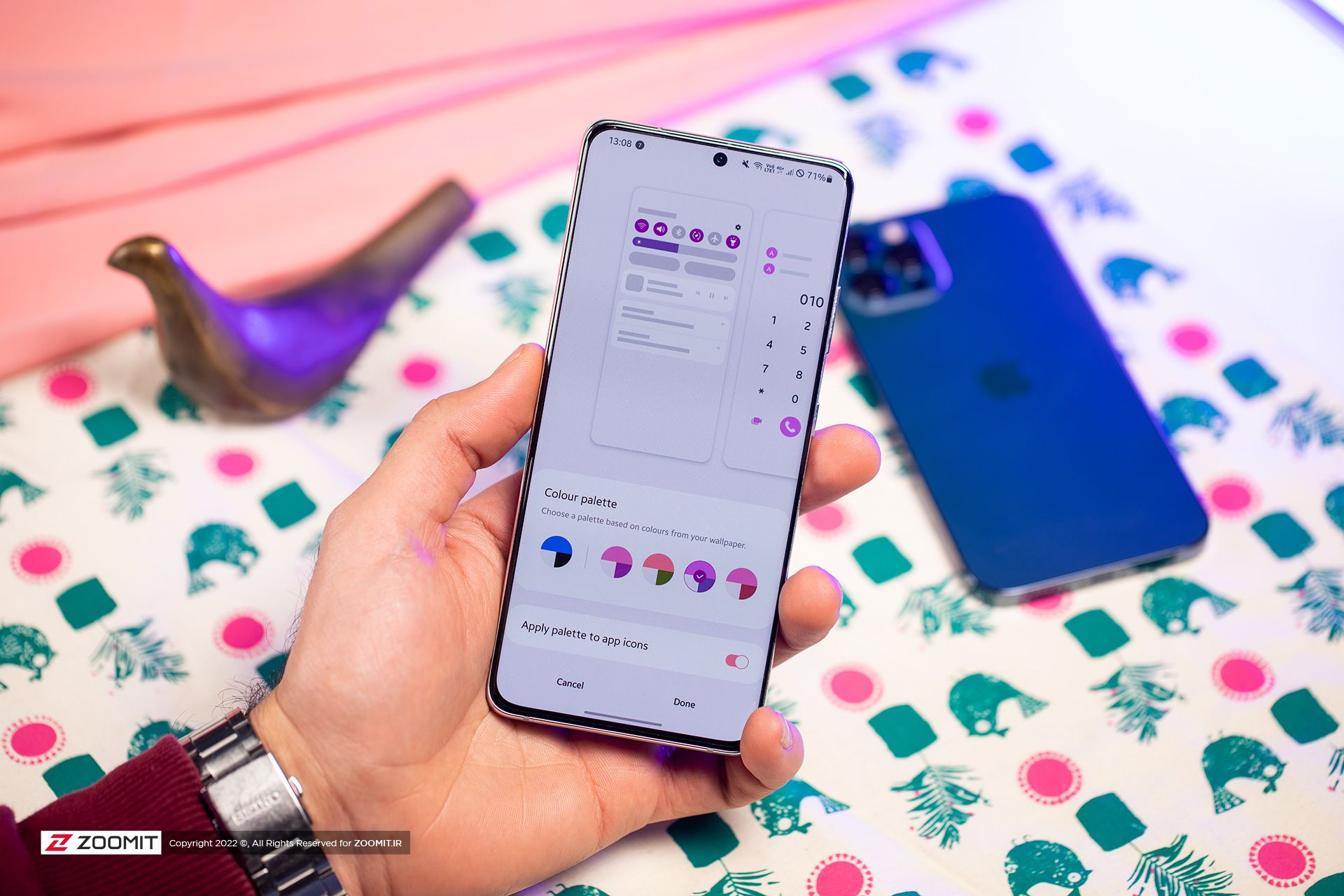
This capability culminates in phones like Samsung and Xiaomi to create and modify the system theme, including fonts, color themes, icon shapes, and system sounds. Although in terms of personalization, the superiority of Android is undeniable.
File management and content sharing
One of the critical issues many users address apart from other issues is vital. Android is developed to share a part of the device’s storage memory with the user and other applications, and the user can use this space as a store for his files.
There is no such thing in iOS. Some may ask that iOS has a file manager. Still, the fact is that the shared storage space in iOS is practically undefined, and the applications each have access to the workspace that the operating system allocates to each of them separately.
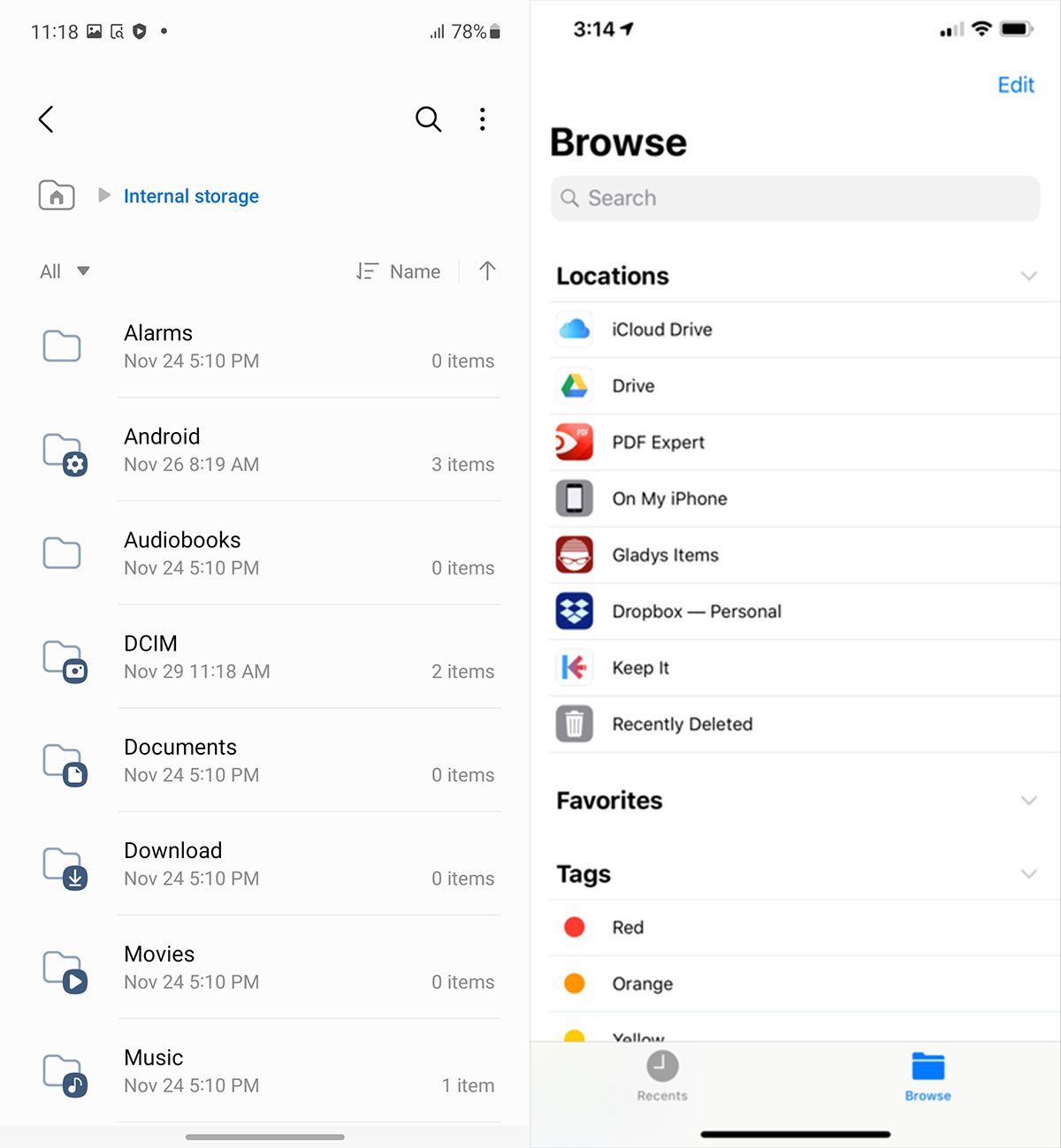
The Files app on iOS gives you a separate space that does not allow you to access files in other apps unless you transfer the data you need from the app to the Files app. It will enable you to share your files in each application to access other applications, causing your phone memory to fill up early.
File sharing is the same, but this is more for more security and to prevent a program from accessing the files of other programs, which we will explain in the security section. But if you are one of the users who need more control over file management, you can open an account on Android phones because managing and sharing files on Android is almost hassle-free and straightforward.
Interact with other platforms
Again, Android and iOS are not superior to each other in general tasks, and both can meet the user’s needs. The advantages of each over the other are discussed only in discussing their strengths and weaknesses. The same is true when it comes to interacting with other platforms.
Apple should be described as a perfect example of creating an integrated ecosystem of its products. It has not seen any ecosystem or platform that ultimately leads to a quality user experience like their interaction. The user does not feel any shortage.
But what does this mean? Suppose you have several smart gadgets, including laptops, smartwatches, TVs, or even home appliances, that are interconnected with each other, meaning that you want to manage each one on another device and exchange data between them. All of which give you access to what you need (so-called Integrity and Seamless Connectivity). In terms of quality, Apple devices work best with each other, but what about other manufacturers’ devices?

Indeed, cross-platform integration on Android phones is not as strong as Apple’s own devices. Still, the truth is that Apple’s policy in this regard is to attract customers to its devices and ecosystem and its goals with the limitations of the iOS operating system.
It is considered to follow, so iOS interaction with other devices does not leave the user as free as Android and has limitations.
For example, you can not display the screen content on all TVs and monitors except the Apple TV or AirPlay-compatible devices. Or, for example, share your files wirelessly with a Windows laptop. Note that there may be informal ways to do this, but if the user is looking for a quick and effective solution, the iPhone may not be a good option because Android phones offer more straightforward solutions.
It is also true when transferring files to a computer or laptop wired. iPhones are best combined with MacBooks for data transfer, but if you have a Windows laptop, it does not work, but to transfer any other file from your phone, except photos, you must first install the software that Apple has provided this.
Function
Like a garment embroidered on a personal person and fits nicely on the body, when software and hardware engineering is formed under intelligent management and close communication, it becomes the product of a system that operates in the best possible way and uses hardware resources in the best possible way. The operating system also integrates well with the device hardware and increases the operating system’s efficiency, as we have seen on iPhones.
Android is an operating system that can not be used on every device by default. Still, every manufacturer must get the code from Google and make it compatible in terms of hardware for each device it produces, meaning that Android on each device with the version released by Google company It’s different.
In addition, some manufacturers are implementing more significant changes to the core of the operating system and implementing their skins in their products.
This operating system is used on countless smartphones today, from low-end phones with weak hardware to flagship phones and the most up-to-date hardware, so the performance of Android is not the same in any of the phones, even the flagships of different brands.
Depending on the number of changes and optimizations developers apply in Android, their performance varies.
The end product that the user gets is the result of a long process, from Android by Google to its compatibility with various devices.
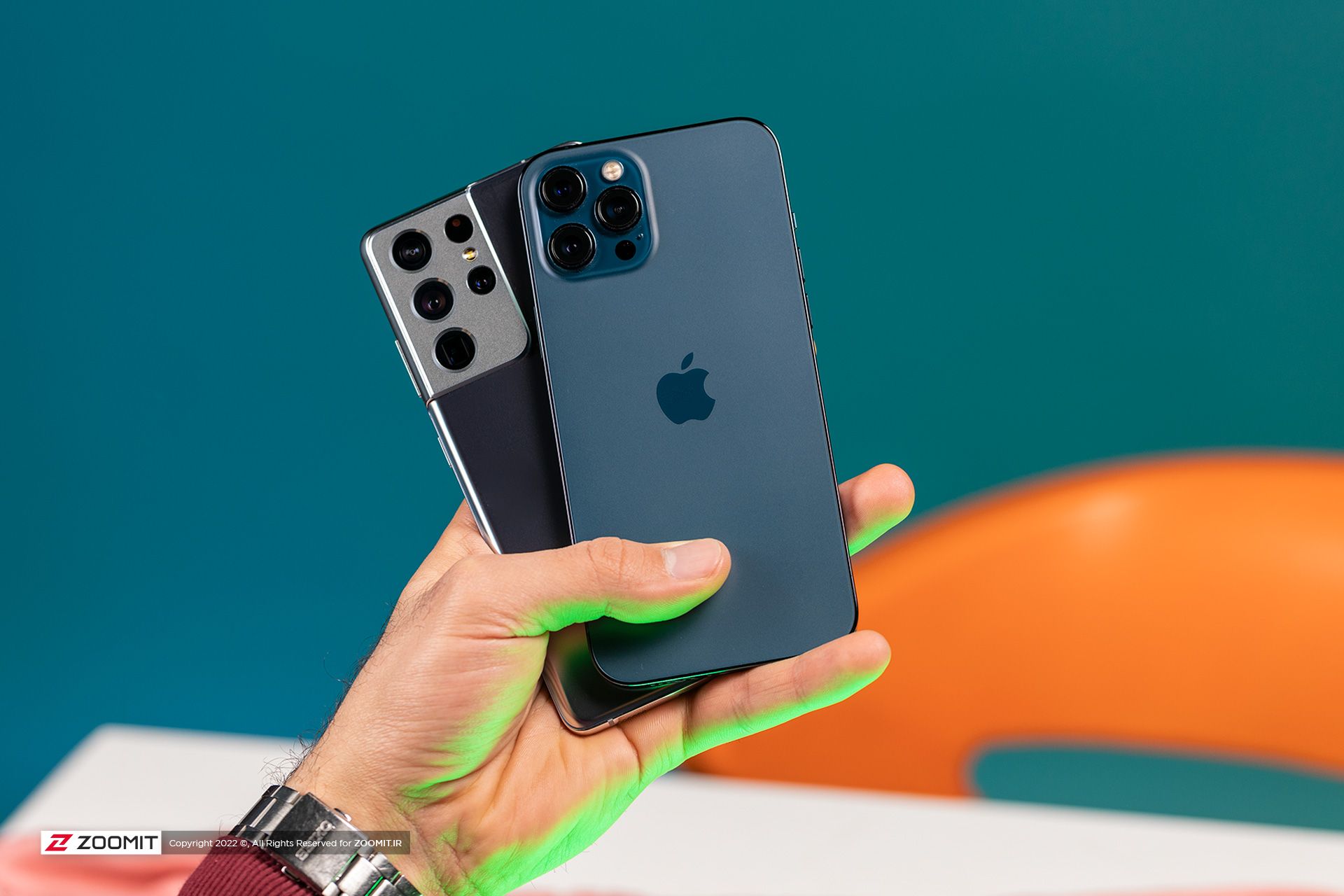
In recent years, Google has made extensive optimizations to Android to be no longer criticized for its performance, even on low-end devices. The user was charged compared to iOS.
Cover battery consumption. Although the manufacturers’ flagship products follow in the footsteps of the iPhones, it should not forget that more resources are available on Android phones than on iPhones. But despite the efforts made, Android is generally one step lower than iOS because the hardware resources in Android are not well managed yet, and especially in the battery sector, the manufacturers have resorted to using much larger batteries for their products than part of Android’s weakness in management.
The same is true for the long-term performance and performance of the phone. IOS phones experience less performance loss in the long run. However, their Android counterpart may be more affected by the performance decline. So if you are one of those who significantly care about the system’s performance and mentality and want your phone to have a lower performance drop for several years, iPhones are a more intelligent choice.
Applications
In general, the two operating systems are not much different in terms of applications, and the stores of each of these platforms meet the needs of each user to the required applications. But there is a significant difference between the two operating systems that can be crucial in choosing a phone, especially for Iranian users. However, there are rumors that a new antitrust bill possibly sided to download applications. That is the possibility of installing (siding) applications outside the store.
It will add to iOS. Also, due to the rules of the iOS app store (AppStore), apps that have a dedicated payment gateway are not allowed to be published in this store.
But not all roads are closed. IOS currently (officially) does not allow the user to install the app from any other source. On the other hand, most essential and essential Iranian applications use the internal payment gateway, and therefore they can not be installed from the App Store.
Many Iranian applications offer their services in the context of web applications. Some in-house service providers also can download apps through their website, but they do so using corporate profiles, which Apple sometimes blocks because they know about it.
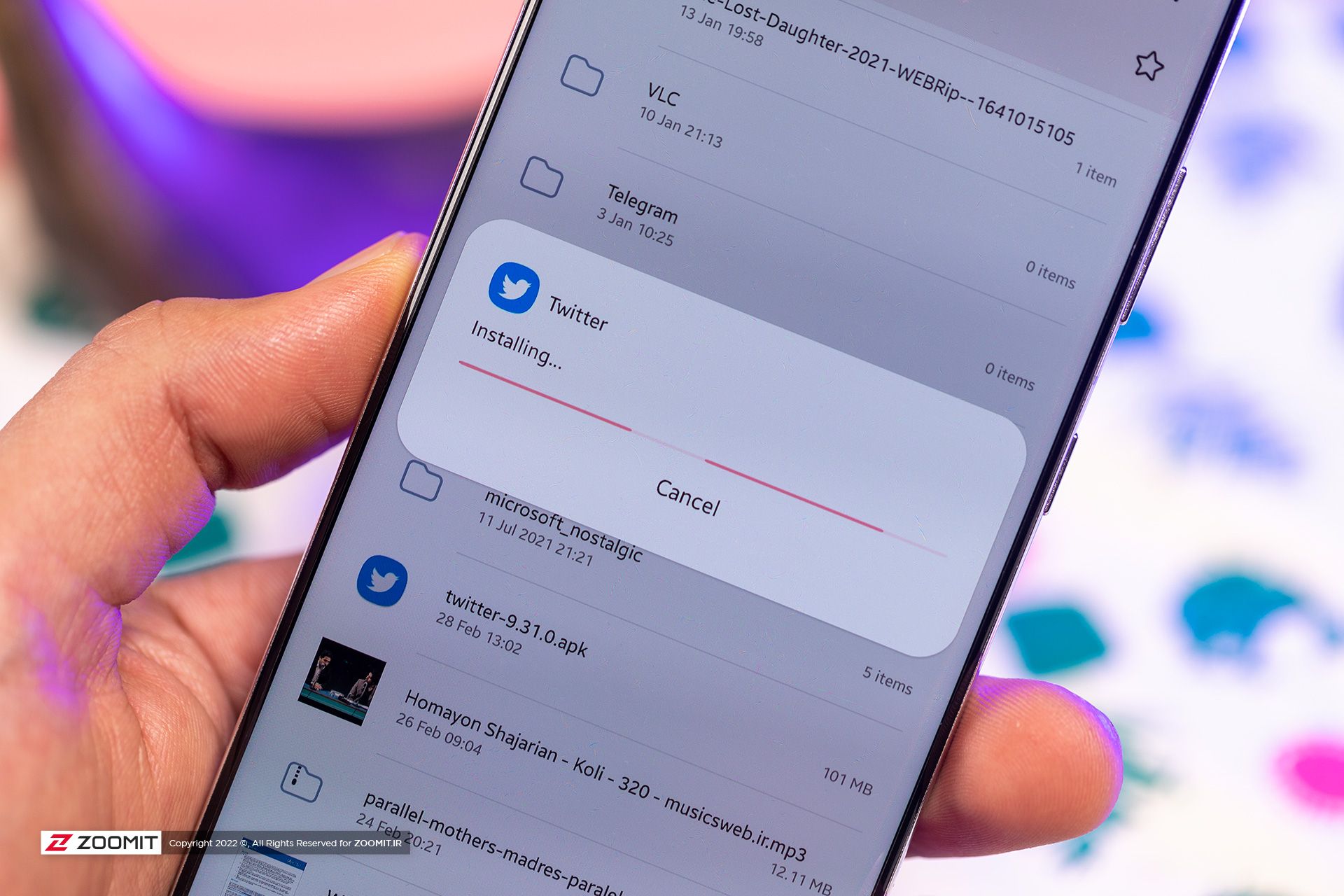
There are other informal ways to install apps outside of AppStore.
But if you are looking for quick and painless solutions to install internal programs, iPhone is not recommended for you. Android users can easily download and install the installation file of their desired program from external sources and sources other than Google Play.
In addition to the above talk, the existence of a wide range of Android phones with economical prices has caused the market to focus in this direction, and the desire of Iranian developers to produce Android applications is higher; Therefore, the variety of Persian applications for Android phones is wider than iPhone phones. Although all the necessary internal applications for iOS are available, in general, there is a significant difference between the number of Persian applications for Android and iOS.
Ability to operate applications in interaction with operating system functions
Apple places particular emphasis on the security of its products. Consequently, the iOS operating system also shows less flexibility in access and authority of applications. In iOS, applications have minimal access to different parts of the operating system and cannot change system configurations and settings. The activity of apps in the background (when that app is not open on the screen) is much more limited than in Android.
To open a file with a specific extension, you can not specify that it will open with the application you want. Instead, you need to copy that file once in the program workspace and access it by opening the program.
Android applications, such as Windows applications, use background services to function even when the application is not open. You do not need time-consuming processes to keep the application available for a long time. You can engage in other activities during that process. Default iOS apps are an exception to this rule, though. So in terms of operating system versatility and flexibility, Android is superior to iOS.
Security and privacy
iPhones are known for their high security, and many people turn to these handsets for the sake of protecting their data and privacy at a higher level. Thanks to the more consistent and regular iOS updates for its devices, the harder-to-penetrate ecosystem, and the stricter rules of Appostor, it makes it harder for iOS attackers to target iOS users. In recent years, Google has reduced its security vulnerabilities by releasing more regular security updates, making Google Play more secure, and taking more severe security measures.
Unfortunately, Android smartphone makers only implement these updates for older hardware in exceptional cases, so Android phones are less secure than iPhones and have become more consumable; Because users of phones with older models have to upgrade their phone model to access upgraded software.
If you are more sensitive to security and privacy, iPhone is an ideal option for you. Most of the reasons given for the weaknesses of iPhones stem from this issue. The safety of users is more important to Apple than other manufacturers, and this is almost well observed in various parts of the operating system.
![]()
Apple’s distinction is based on the amount of data processing on the user’s device, not in the cloud.
It means that Apple has less information about your habits and behavior than Google; Because information like the restaurants you go to every weekend is stored on your iPhone. At the same time, this information is stored in Google servers on Android phones. Apple even uses a number of its capabilities to restrict user tracking to protect their privacy.
Google argues that knowing more about its users’ habits empowers them to make life easier for them; So when you search for “restaurant” on Android, the restaurant where you dine every Friday will appear at the top of your search results. Google provides easier access to personalized services and ads related to users’ tastes.
Apple has always been focused on security and privacy. While Apple collects information such as the phone’s location (for example, Find My iPhone) and installed applications (to recommend new applications), the data it collects is more limited than Google. Most of the data sent back to Apple (such as searches and location information) is anonymous and cannot be linked to a specific user. The default iPhone apps are also highly secure.
Google’s primary business model collects user data and sells that data to advertisers.
So Google needs to access users’ data and share it with other companies. Apple does not sell its user habits and interests to third parties and provides users with tools to limit what other companies can collect about them.
It is noteworthy that some of these measures, if the user is not well aware of them and does not obtain the necessary information about it, sometimes (for example, resetting the device to the original settings and not knowing the password) will take their toll.
Increase the set. Therefore, this may not be to the liking of users who find annoying credentials and repeated security messages annoying. It is up to the user to decide which one to prioritize. Regardless of anything else, you must know the manufacturers’ privacy policy, security, and usage rules if you buy any Android or iPhone phone.
Software updates
One of the most controversial differences between the two operating systems from the beginning to the present has been the issue of operating system updates. Although updating does not directly create functional and functional differences between the two operating systems, it is an essential factor that affects the user experience. The differences between the two in terms of software updates depend on the policies of different manufacturers.
At the beginning of the article, the iOS operating system is perfectly designed for iPhones, which does not take long to implement. The iPhone hardware and software development process is perfectly coordinated. But in general, it is no secret that one of the strengths of iOS compared to Android is the more extended support period and receives updates, the reason for which is evident to everyone.
All the hardware suppliers of an Android smartphone are engaged in delivering the software updates. But this is different for manufacturers. Aside from the myriad variety of Android phones, its implementation involves much longer and more time-consuming processes. It poses two significant problems for manufacturers: It takes a long time to release the first public version of Android until the update reaches the user.
The number of essential operating system updates, including the Android version and the user interface, is much less than the iPhone.
Fortunately, thanks to Google’s efforts, the Android update has improved significantly over the past few years. It has been increased to four years, which can be excellent news for users who have the issue of updates that make them hesitate to choose Android. Although some manufacturers are still lazy in providing updates and no Android phone has ever received as many updates as any of the iPhones, some manufacturers such as Samsung have made significant efforts in this regard and have recently made important updates for their flagships.
Although the updates are not just about the operating system version and new features, they may include security patches or, for example, the phone may have software bugs at the time of release that the manufacturer fixes by providing updates; Therefore, updating is one of the most critical aspects of an operating system, and its importance should not overlook, and the necessary studies should be done among different manufacturers in providing updates.
Conclusion
We are now at a point where the two operating systems are almost at the crossroads, But they continue to develop like two parallel lines, one hair apart. Deciding whether to buy an iPhone or an Android phone will ultimately be up to you, your needs, and your priorities.
In this article, we tried to examine the functional differences between iOS and Android operating systems to get a better view of the strengths and weaknesses of each, and you can make a better choice.
When choosing between iPhones and Android phones, the importance of different factors is different for different people. Some people value the choice of hardware, while others love the simplicity, freedom of operation, or phone security.
IOS and Android operating systems will never be the same, which is to the benefit of consumers. Users who prefer customization and endless freedoms can use Android, and those who want a secure, private, durable, and functional phone can opt for iOS.










